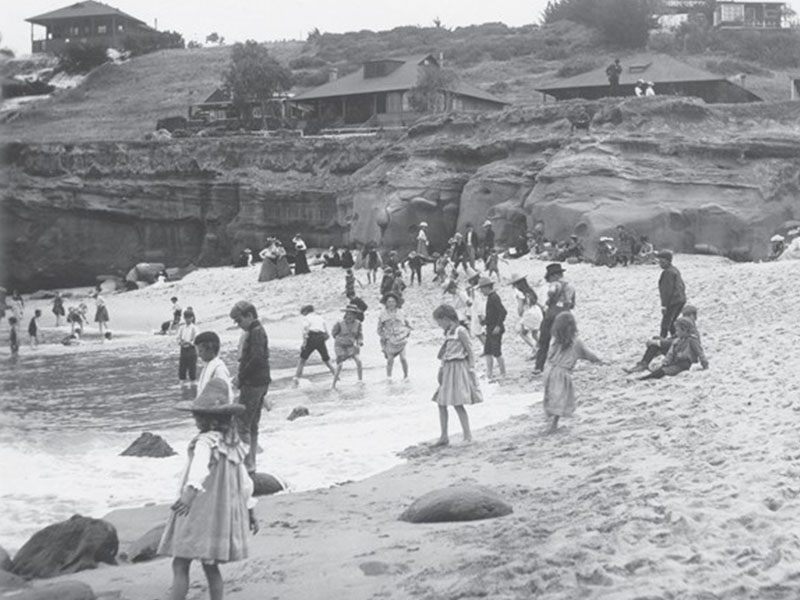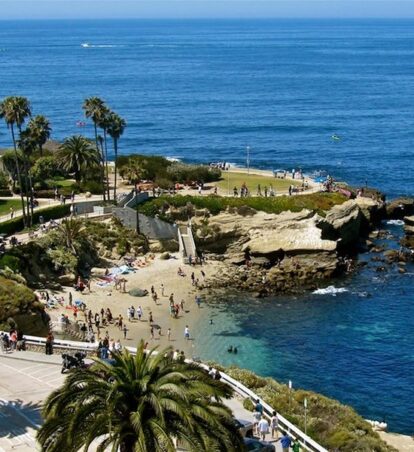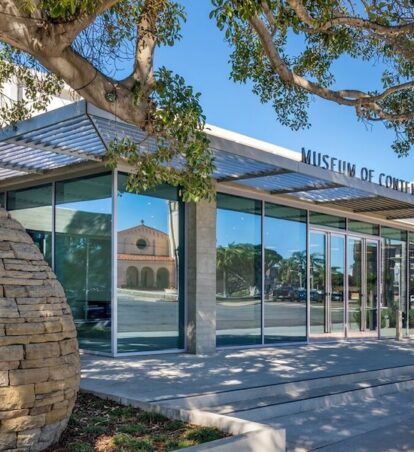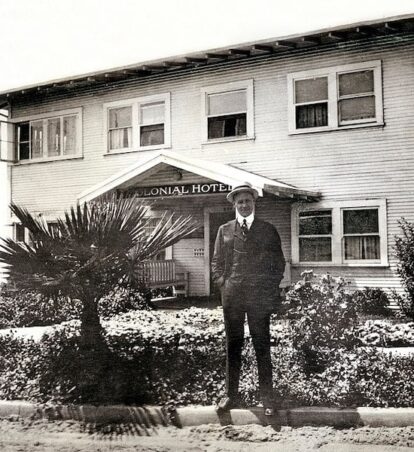A Jewel From The Start: The History Of La Jolla
"La Jolla is a bit of sea coast of many moods and manners… It has a magnetic charm and personality, and once under the spell, it grips our lives and thoughts ever afterwards."
Those were the words used to describe La Jolla early on in the official publication of the La Jolla Chamber of Commerce. Everyone who visits La Jolla sees that those words remain true today.
From the downtown elegance, beachside Cove, cliffs, and Children's Pool to the long stretch of beach at La Jolla Shores, this resort town has fun, charm, and class to spare. It's no wonder that generations of residents and visitors have found themselves renewed by the scenery, climate, and soothing waves that roll onto the beaches of this Pacific paradise called The Jewel of the Sea.
This is as true today as it was in 1887 when Frank Botsford, a successful New York stockbroker, who is considered to be the father of La Jolla, was so awe-struck by the area's perfect weather and natural beauty that he bought it - for $5.50 per acre. From the beginning, Botsford envisioned turning this enchanting place into a resort community. It wasn't long before he surveyed the land and built a small, attractive home for his family on what would become Prospect Street.
Within a few years, Botsford had managed to attract a steady flow of tourists from Los Angeles and San Diego. They would come to enjoy the hiking, swimming, exploring, and beach-life that the area offered. There were no first-class accommodations at the time; in fact, there were no accommodations at the time. That early in La Jolla's history, vacationers slept in tents at the Cove. Like the Kumeyaay Indian tribe before them, visitors listened to waves breaking on the shore and watched sunsets over the water in a world that seemed unchanged for centuries.
In 1894, La Jolla started to grow beyond cottages and tents. Like many resorts, this was helped along by the opening of a railroad and a hotel. Short- and long-term visitors arrived on the Abalone Special–a quaint train with open-air cars that offered scenic and breezy rides to and from San Diego. Visitors who preferred accommodations more genteel than a tent could stay in the La Jolla Park Hotel, a magnificent Victorian with steeply pitched roof lines and wide verandas.
Unfortunately, the Park Hotel succumbed to a fire, but it succeeded in laying the foundation for La Jolla becoming a first-class seaside resort. It was located adjacent to where the Grande Colonial stands today. It was where Ellen Browning Scripps, the local philanthropist, founder and donor to major local institutions and parks, stayed when she first visited the town. Thankfully, there are still a few pre-1900 buildings standing, with Brockton Villa being the most well-known. It is now a popular restaurant across from the Cove and enjoys the same magnificent ocean view it has always had.
Without an upscale hotel, visitors stayed in the many bungalows and small inns that sprang up in the village and along the low cliffs by the ocean. These quaint bungalows came to define La Jolla's image and the local tradition was to name them as one would a grand estate - very tongue-in-cheek. There was Honeysuckle Lodge, Wysteria, Wigwam, Matterhorn, Red Roost, and many others. The most famous was Anna Held's Green Dragon Colony, which became the place for the literati who were increasingly visitingthe town. Miss Held was known for her many eccentricities, including having cut a hole, not a window – a hole, in her bathroom wall so she could see the ocean when she bathed.
Holidays in particular were big days for family outings in La Jolla and events were sometimes staged to entertain the crowds. There was a balloon ascension with "Professor" Romeo the aeronaut, and on July 4th, 1898, local cliff diver, "Professor" Poole, even lit himself on fire before jumping the 100 feet into the sea in front of an astounded crowd. Showing its more serious side, the town established the Torrey Pines State Reserve in 1899 to save the unique trees and preserve some of the most spectacular scenery in the country for future generations to enjoy.
La Jolla came into its own in 1913. In this year, the local newspaper was established, the first theater opened, construction of The La Jolla Women's Club began, and the first buildings of The Colonial Hotel were built. Local realtors, A.B. Harlan and George Bane saw the need for another hotel with proper accommodations, including private baths. Their hotel, The Colonial Hotel and Apartments, established a more mod- ern approach to lodging and met the increasing expectations of the people who were vacationing in La Jolla.
By the middle of the 1920's, a real estate boom was underway. Although the streets weren't yet paved with gold, they were now paved, which encouraged more tourists and the businesses that catered to them. The Abalone Special was replaced with a streetcar called The Red Devil, and more hotels were being built in town. Growth and expansion seemed to have no end in sight. George Bane saw where things were headed and decided it was time to expand The Colonial to meet the increasing demand. It took years of planning and construction, but in 1928 he opened a new building that was larger and grander than anything in La Jolla.
During the 1930's and early 1940's, life was relatively quiet in La Jolla as it weathered The Great Depression. The biggest sensation was the glider port - a take-off and landing area high above the ocean on the cliffs of Torrey Pines. This area, home to flying thrill-seekers, was as popular then as it is today. In 1940, the United States Army closed the glider port and opened Camp Callan - a coastal artillery school - in anticipation of going to war.
The Colonial Hotel did its civic duty by hosting officers, enlisted men, and their families in overflow housing throughout the war. During the day, many of the officer's wives volunteered at the Red Cross, making bandages at The La Jolla Women's Club just down the street. At night, the Colonial was full, busy, and certainly a great place to be living. One cannot help but feel sorry for the men and women who had to endure the hardships of living off base. According to Skip Hunter, a local restaurant owner who first came to La Jolla in the 1940's when stationed at the camp, "Camp Callan was the country club of the army."
After World War II ended, La Jolla returned to the business of fun and the entertainment of tourists. While most of the Camp Callan land was turned over to the State of California, which built the University of California, San Diego, the rest eventually became the Torrey Pines Golf Course. In 1947, actor Gregory Peck and several friends founded The La Jolla Playhouse. The La Jolla native called the town "a magical little resort community", and La Jolla became known as "Little Hollywood" for several years. Producer Delmer Daves said what kept the stars coming to La Jolla was very simple, "serenity".
In the 1960's, La Jolla became known for its tennis and golf, with a little surfing thrown in. Actually, it was a lot of surfing. La Jolla has a major beach break at Windansea Beach that was so popular with the Baby Boomers that the Beach Boys included La Jolla in their surf anthem, "Surfin' USA."
For the last 50 years, the Boomers have settled down and the town has grown into a premier resort, shopping destination, and upscale suburb of San Diego. La Jollans can boast having some of the most expensive real estate in the country, with some ultramodern homes perched almost 825 feet above the ocean on Mount Soledad. La Jolla offers every possible luxury in a relatively small, beautifully laid out town with four-star restaurants, art galleries, clothing boutiques, and jewelry stores. La Jolla could fairly be called San Diego's Rodeo Drive.
All the while, the Grande Colonial has played its part as host, gracefully watching over the village for 100 years, providing guests and residents with a valuable sense of history and community in this enchanted place called The Jewel of the Sea.




